Amazon Transparency Program: Is It Worth It?
Everything you Need to Know About the Amazon Transparency Program
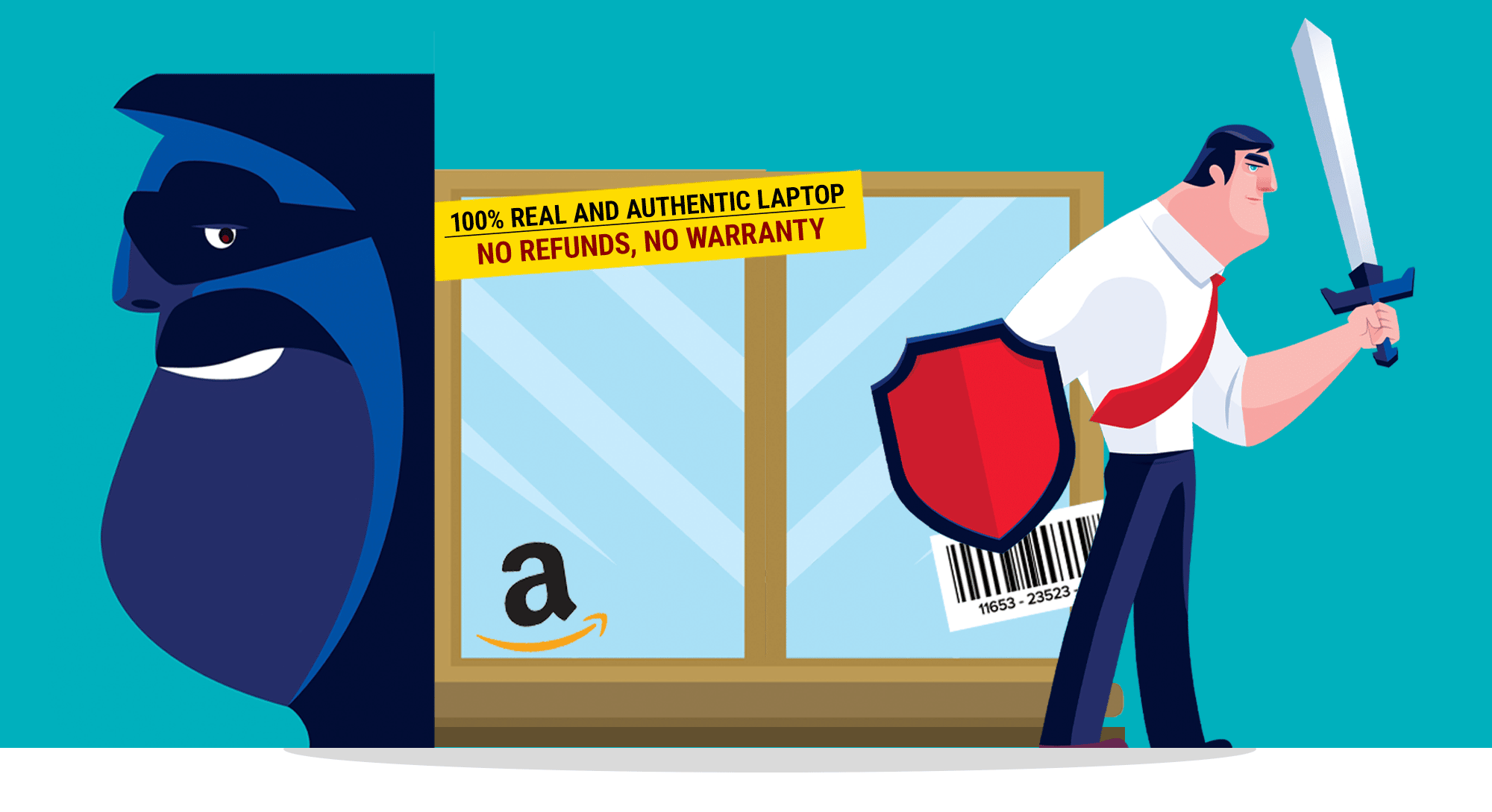
Ah, counterfeiters, wretched beings that lurk within every corner of every online marketplace.
If you’re Amazon, with 1.6 million active sellers and a whopping 350 million products flying around, it’s nigh impossible to keep all these sketchy sellers at bay.
Amazon is trying though.
In this article, we’ll look into one of its proposed solutions to the counterfeiting problem—the Amazon Transparency Program, what its pros and cons are, and if it's worth it for you.
Related Reading: Amazon Transparency vs. Amazon Project Zero
Related Listening: E398: How To Defend Yourself Against Copycats and Sabotaged Listings
What is Amazon Transparency?
Here’s how Amazon describes it:
Transparency is a product serialization service that helps identify individual units and proactively prevents counterfeits from reaching customers.
In other words, Transparency is a service available to Amazon brands and third-party sellers that gives each and every product you send into FBA a unique ‘transparency code’ that counterfeiters cannot generate for your brand. It contrasts a UPC code or an EAN, which is public knowledge and can be duplicated by nearly anyone.
This code can be scanned:
- By Amazon, to verify that the products coming into their Fulfillment Centers are authentic;
- By retailers (If you’re a manufacturer); and
- By customers, using the mobile app, to make sure that they did not receive knockoffs or inauthentic items.

With Amazon, there is a lot of incentive to lower prices in order to win the Buy Box. To do this, sketchy sellers will use cheap materials to reproduce good products and even hijack your listings to sell their knockoffs. This is bad for customer experience and, in turn, hurts your brand reputation.
Transparency is one of Amazon’s ways of keeping counterfeiters at bay and boosting brand confidence for brands enrolled in Brand Registry. If a seller cannot provide a valid Transparency code to Amazon, the unit will not reach the customer, or at least the customer gets a heads-up that it’s not your actual product.
How does Amazon Transparency work?
Transparency is akin to how big brands assign serial numbers to every unit of every product they sell (i.e., every iPhone has a unique serial number).
With Transparency, when you ship products into the Fulfillment Center, Amazon will look for this code for authenticity and will not accept units without any transparency code.
Amazon will also verify the code right before the unit ships out when you make a sale.
When an order reaches your customers, they can scan the code to verify authenticity and check other information. A green check mark indicates that the product is authentic, while a red cross mark will tell them that it's a knock-off. Customers can then get in contact with the Transparency team to report a potential counterfeit.

Sellers can still show other identifiers and unit-level information on the print label, as long as they comply with the format shown above. This means that you can show the UPC, FNSKU, and information like manufacturing date, ingredients, and materials used on the print label. As of writing, a lot of sellers were expecting Amazon to enable them to place a link to a brand page or an Amazon storefront.
What is the Transparency App?
Amazon offers a Transparency feature, enabling purchasers to effortlessly authenticate and cross-verify Transparency-protected products acquired online. By scanning the product's QR code, the app reveals a green tick for a valid code and a red cross for an invalid one.
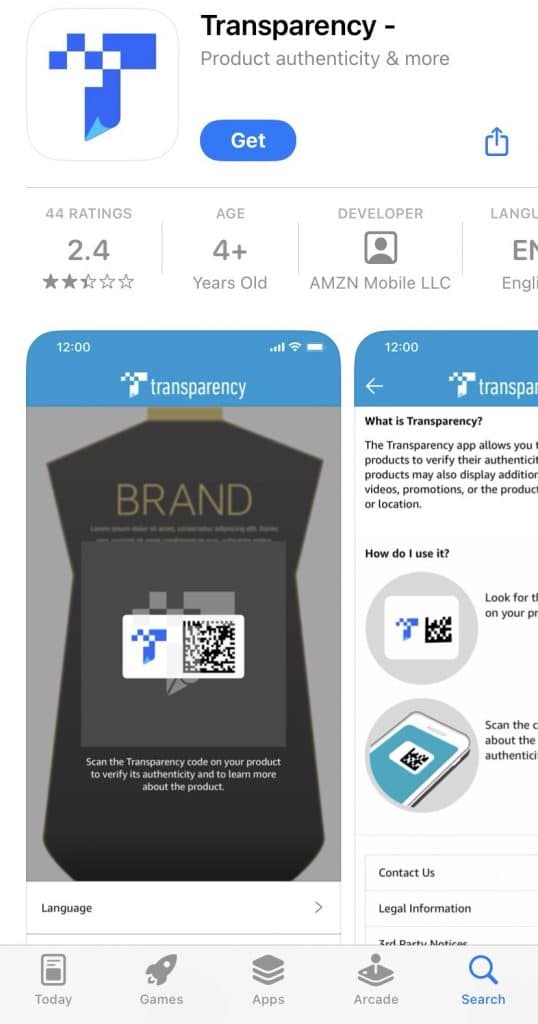
Additionally, brands have the opportunity to share unit-specific details like the manufacturing date, place of production, and other information with consumers via the Transparency app.
Can I enroll in Transparency and be FBM?
Yes. If you’re selling on a Fulfilled By Merchant model or Seller Fulfilled Prime, that is, if you handle the pick-pack-ship process yourself, you can still use Transparency.
You can still get Transparency codes from Amazon, but you have to provide them with the specific codes of all units you ship to customers yourself.
Does the Transparency Code Replace the UPC?
No. Global Trade Item Numbers (GTIN) such as Universal Product Codes (UPC) or European Article Numbers (EAN) are used to identify a certain product on the market. On the other hand, Amazon Transparency Codes are used to identify each and every unit of a particular product.
So if you’re selling 5 units of Product X, you’re gonna have 5 unique Transparency Codes, but only 1 UPC code.
Note: A legitimate GTIN is a standard requirement to be eligible for the Transparency Program. More on that in a bit.
What are the Pros and Cons of the Amazon Transparency Program?
While Transparency sounds good up front, it’s not a free service. It adds some extra steps (and extra costs) to your supply chain. Check out the perks of Transparency and what it will cost you below:
Amazon Transparency Pros
- Keep counterfeiters at bay. Every party in your supply chain can verify your products using the transparency code, making it difficult, if not impossible, for counterfeiters to hijack your listings. (Just make sure to keep your codes safe)
- Protect and boost brand image. When customers scan your transparency code through the app, a green check mark will pop up to signify authenticity. Not having to worry about hijackers and copycats dragging your brand down is an easy win.
Amazon Transparency Cons
- Extra steps in the shipping process. Transparency will require you to apply the labels to your products, which is quite tricky to automate, since every code is unique.
- Not a free service. Transparency labels will cost you between 1 to 5 cents per label, depending on your order volume.
Also consider the costs of printing and applying each label to each of your units. - Eligibility requirements. Like other Amazon opt-in programs, you’ll need to put in some work to get enrolled in Transparency, although I could argue that the requirements are something you should be doing as a serious seller anyway.
- Transparency is only for your listings. If counterfeiters are trying to sell your product outside of your listing, you’ll need to raise an IP concern.
- Amazon requires you to apply Transparency labels even on units sold outside of Amazon. If you’re concerned about Amazon tracking seller data and where else they sell their products, this could be a red flag to you.
How Much Does Amazon Transparency Cost?
Amazon transparency costs anywhere from to 1 to 5 cents per code.
On the back of your mind, you’re probably thinking: Why are the sellers being made to pay? Doesn’t Amazon have its own counterfeiting problems? (Remember when they ripped off Peak Design’s sling bag?)
You’re guess is as good as mine.
At 5 cents per code as of writing, it’s not exactly cheap to implement especially since the costs can add up.
In any case, you could say that a couple of cents per unit per code is a small price to pay to avoid the headache of having counterfeiters drive your business to the ground or get you suspended.
To avoid this cost adding up, Amazon offers volume discounts. At the time of writing, the rates were:
- 5 cents per code;
- 3 cents/code if you order at least a 1 million codes at a time;
- 1 cent/code if you order over 10 million codes at a time;
Another cost to consider is the costs of printing and applying the labels to your packaging. You will either have to print the labels yourself or buy them from a Transparency Service Provider (TSP) approved under the program.
TSPs are third-company companies that are vetted by Amazon and they already know the ins and outs of the program, which means your codes and labels are more protected.
How do I sign up for Amazon Transparency?
A lot of sellers say that signing up to Transparency is a relatively painless process, which, let’s face it, we don’t often hear about Amazon.
Here’s a neat little graphic from Amazon’s Transparency page:
1. The ability to verify yourself as the brand owner for your products.
This means being registered to Amazon’s Brand Registry or securing a trademark over your product. Of course, it makes little sense trying to protect your product from counterfeiters if you don’t have rights over it in the first place.
You can hit two birds with one stone by checking out the Amazon IP Accelerator Program, which enables you to process an application for IP by working with Amazon-accredited firms and get enrolled in Brand Registry much quicker.
Related Reading: The Ultimate Guide to Protecting Your Brand on Amazon
2. A Global Trade Item Number (GTIN), such as a UPC or EAN barcode on your products.
You need to secure a valid GTIN over your products. Valid means that Amazon will be able to confirm it on the GS1 registry. Ergo, get your GTINs from official sources.
3. The ability to apply unique Transparency codes on every unit you manufacture.
You can do this by either:
- Working with a Transparency Service Provider (TSP);
- Printing labels yourself and sticking them onto your packages; or
- Using the design-in packaging method
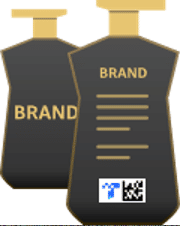
Applying the labels yourself will probably save you money, but the design-in method (integrating the codes to your artwork and packaging) streamlines the process and works better for marketing.
Once you’ve got those basic requirements sorted out, you can go to the ‘Get started’ portal on the Transparency website to sign up. Amazon will ask for your contact details and brand information.
4. Onboarding
After some verification, an onboarding specialist will contact you within a couple of weeks to set you up for the program.
A good number of sellers say this process is somewhat painless, and that Amazon was quite helpful throughout the process.
When you’re set up, you can begin registering your products and ordering transparency codes. On the Transparency service portal, you can select for which product you want transparency codes and indicate how many codes you wish to generate. You can also access transparency code files or transparency reports here.
Should I sign up to Amazon Transparency?
Like most Amazon programs, Transparency is a better fit for some sellers more than others.
It’s certainly worth considering if you’re already on Brand Registry and have a trademark on your product. In other words, if your product is mid-way through its life cycle and it’s worth protecting.
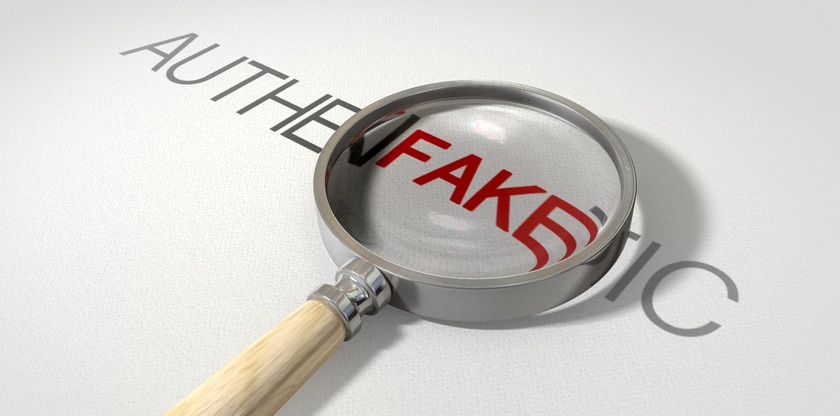
It’s also a no-brainer if you’re selling a high-value product that’s susceptible to counterfeiting, such as electronics and unique widgets.
By the way, as of writing, Amazon allows you to enroll only certain ASINs to Transparency and not your entire product line. This lets you test the waters or even just prioritize your best seller. For every product you enroll, you will need to apply a unique Transparency code on every single unit manufactured for that product.
Final Thoughts
Amazon Transparency is not a flawless service, but it’s a good effort from Amazon to protect genuine brands and ease its counterfeiting headaches.
The requirements to sign up are steps that you would (and should) take if you want to protect your brand and stave off those pesky counterfeiters.
Have you tried Transparency? Leave a comment below.
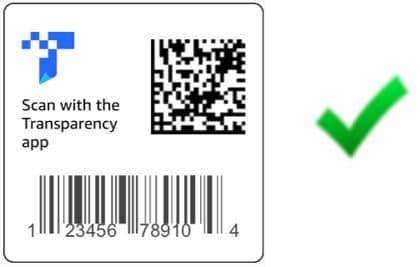

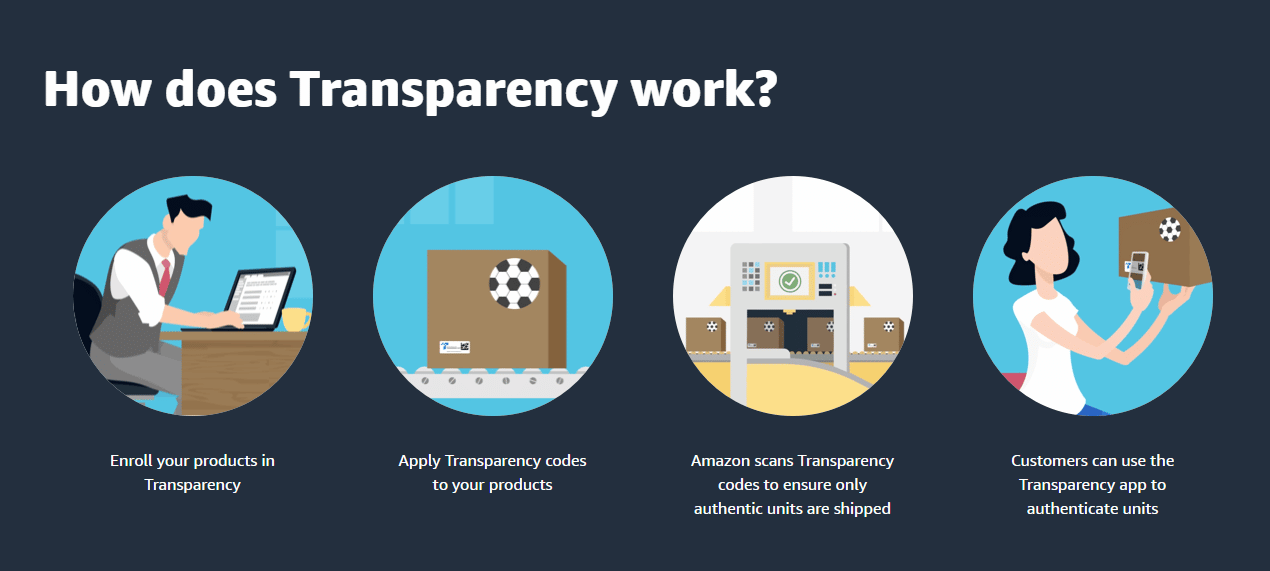
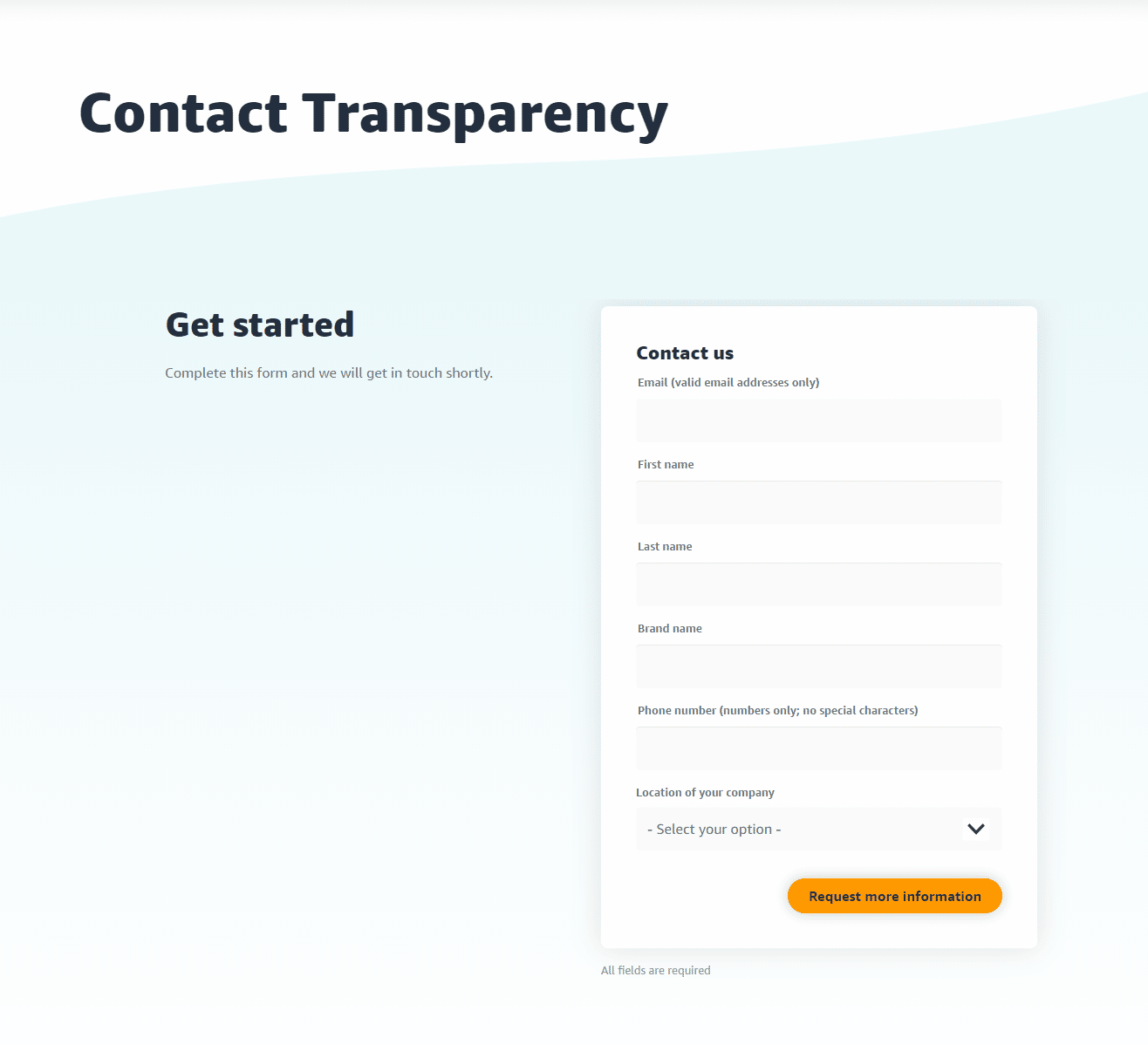




Great write up since Amazon is never “transparent”. I have some questions: Are the transparency codes unique on an item by item basis? in other words Product A would require 50 unique codes for each unit of product A sold or would product A receive one code that is the same for each unit of Product A sold. The second question is how does the seller receive the transparency code? Are they generated in a pdf format that can be configured to a particular label format for easy printing?
It’s unique by each individual product, so 50 units of Product A has 50 unique codes. They’re generated in PDF format.
Hi, I have one question. When creating a purchase order on SP-API to deliver a unit of my product with transparency code, or a set of units, does Amazon returns in the order information response data the individual transparency codes for that particular purchase order?
Thanks in advance.
Hi, I have another question regarding transparency codes: When I manufacture my own products, I want to include the individual transparency code QR in every single unit of my product. If I want to manufacture let’s say 100,000 product units to be sent to Amazon Logistic Centers, can I have access from Amazon to 100,000 transparency codes given by them or can I generate the transparency codes on my own providing I fulfill all the requirements needed for transparency codes. I have the ability to manufacture it automatically printing a unique transparency QR code (as a “serial number”) avoiding manual o automatic labelling after manufacture of the individual product units.
Thanks in advance,
You will need to purchase them from Amazon (i.e. 100,000 at a time) you can’t generate them on your own. The catch is they’re all unique.
I just attempted to sign up for the program. It appears that the folks working on it are really Amazon employees. They sound confident and competent. I don’t think they ever sign anyone up for this program. If there really are people using it then it must be a secret. I have seen nothing about this program working. I tried.
If I embed the code in my product artwork for the label, and print 100,000 labels. how is it the each product gets a different code.
Can a printed label with a real code not be reprinted by a counterfeiter.
You don’t embed the code in the artwork. It needs to be a sticker as each code is unique.
You can embed TR codes into your design. Philips does this for their Norelco & Sonicare lines. Eligibility will be dependent on implant printing and API setup. Transparency is also now interoperable with existing serialization. This means that brands who serialize and want to Transparency protections can avoid the lift of adding an additional touch point and cost to their existing manufacturing process.
Hi, our brand is enrolled in the Transparency program and at the time of enrolment we were told that for each ASIN we enrol we must provide 10 photos of the same product showing the sticker, for example product A in size 36/38, photos of the same product 10 times. The same for each size. This took a lot of work and we still don’t understand why we need to provide this, nobody at Amazon answer us conclusive about it. After several emails exchange, mainly from me and not receiving any reply, they now say only 5 photos per ASIN is ok. My question is, is this necessary? Can’t we just enrol the ASINS without having to send 5-10 photos of each item?
Amazon does this to ensure your product labels are being places on the same side as the UPC and that there is no risk of an FNSKU being placed over your T-codes as this would render them inauthentic.
Thanks for sharing this excellent article. However, as a customer, I don’t feel that this transparency app provides any real value to me. It simply displays the project that’s currently in front of me, and there’s a risk that malicious sellers could simply copy the code to the product they’re selling. Therefore, in my opinion, this app doesn’t provide any additional information and seems rather pointless.
The Transparency badge is displayed on the detail page. As a customer you now have the ability to verify a products authenticity prior to purchasing.
We are in the process of enrolling for a few of our brands. The process is very awkward and convoluted. If we can ever get products to the “protected” status, the effort will be worth it.